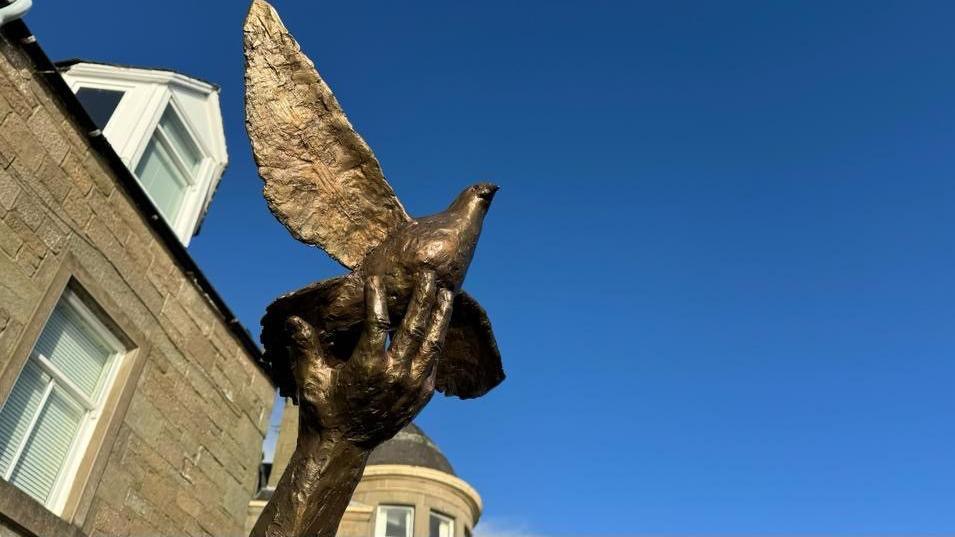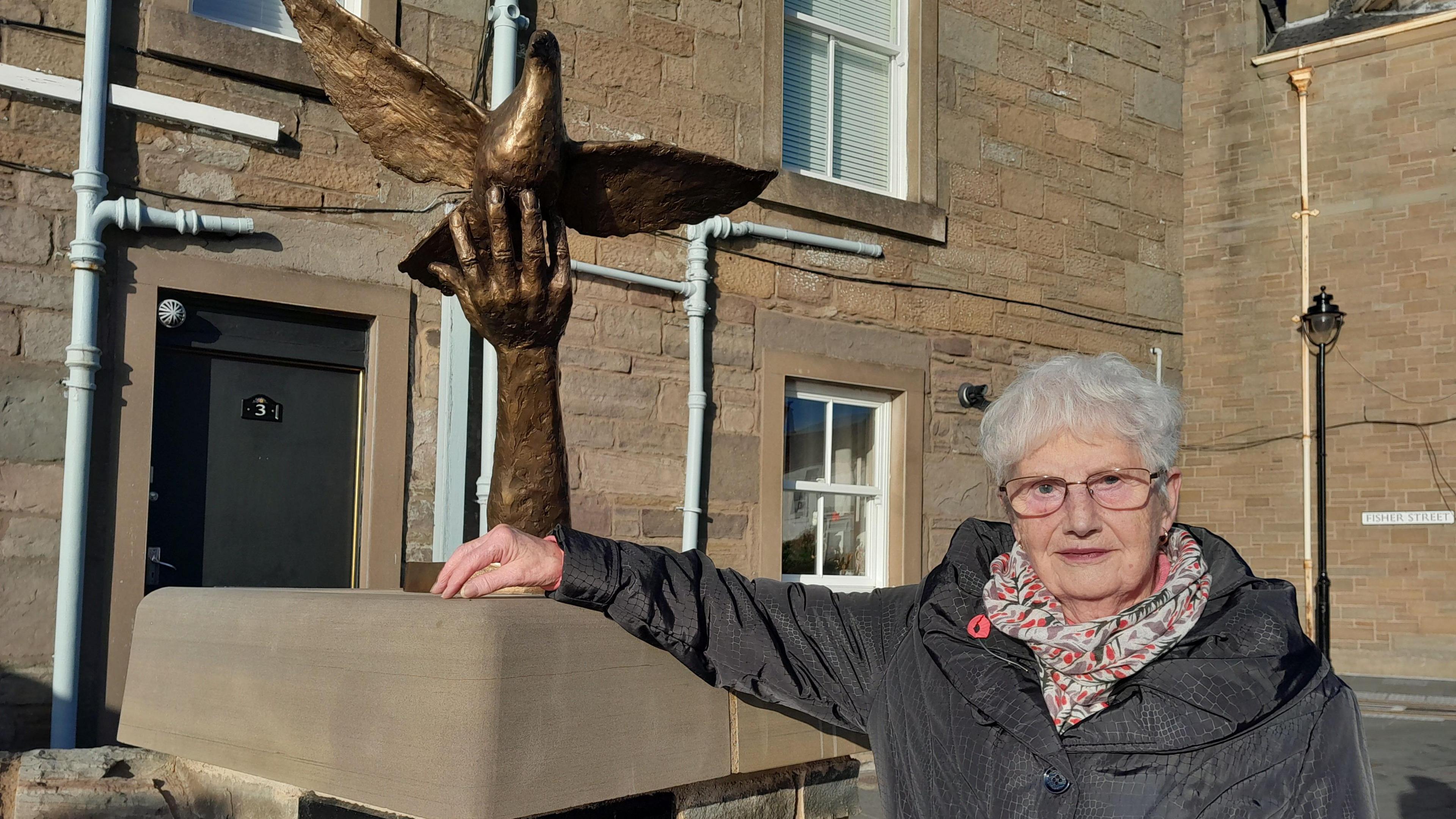The pigeon that saved lives in WWII gets a statue

Winkie was one of the first animals to receive the Dickin medal
- Published
A new statue has been unveiled in Dundee to honour a pigeon who became a World War Two heroine.
Winkie was one of the first ever recipients of the Dickin medal, for animals that displayed conspicuous gallantry or devotion to duty while serving the Armed Forces.
She received the medal for her role in the rescue of aircrew that crashed in the North Sea in 1942.
The bronze statue is part of a new development of flood defences beside the river Tay and sits on the floodgates in Beach Crescent.

Winkie the pigeon was stuffed and is on display in Dundee's McManus art gallery and museum
The Dickin medal was awarded to Winkie by veterinary charity PDSA and is still given out to animals in combat to this day.
On 23 February 1942 the crew of an RAF Beaufort bomber were returning from a mission in Norway.
The bomber was badly damaged after being hit by enemy fire and crashed into the North Sea about 120 miles from home.
In an era before GPS and satellite locator beacons, carrier pigeons were routinely carried by RAF bombers as a way of contacting the shore in the event that an aircraft came down.
The four-man crew released their pigeon, called Winkie, in the hope she could fly home to her loft in Broughty Ferry, near Dundee, to alert colleagues at the air base.
They then waited in freezing cold waters, unable to radio an accurate position back to base.
Winkie made it home and was discovered covered in oil and exhausted after flying 120 miles. Her owner George Ross then informed RAF Leuchars in Fife.
She was not carrying a message but the RAF worked out where the downed bomber was by calculating the time difference of the aircraft's ditching and the arrival of Winkie, while taking into account wind and the impact of oil on her feathers.
They launched a rescue mission and the men were found within 15 minutes.

Norma Nicolson remembers holding the pigeon as a child
An unveiling ceremony for the new statue was attended by relatives of Winkie's owner and the Cubs of the 49th Dundee Scout Group.
Norma Nicolson, whose mother was the cousin of Winkie's owner, was at the ceremony.
She remembers holding the heroine pigeon as a child of five or six.
Ms Nicolson said that Winkie has "always been part of the history of the family".
She added that the statue was important to "keep Winkie's story alive".
Councillor Steven Rome, convener of Fair Work, Economic Growth and Infrastructure, said: “The tale of her exploits has inspired new generations over the decades."
Mr Rome said that when Winkie died her owner donated her body and her Dickin Medal to Dundee Art Galleries and Museums.
Both can be seen today on display in The McManus: Dundee's Art Gallery & Museum.